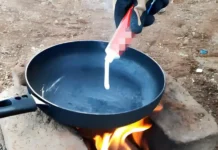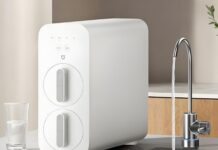What are some common ways to check if the iPhone screen has been replaced? What are the risks of using an iPhone with a replaced screen? Let’s find out right now.
The most common ways to check if the iPhone screen has been replaced
iPhone is a premium brand that has gained the attention of many users in Vietnam. With its high price, buying a new iPhone is sometimes beyond the reach of many people, which is why many people choose to buy a used iPhone.
/fptshop.com.vn/uploads/images/tin-tuc/178773/Originals/cach-kiem-tra-man-hinh-iphone-co-bi-thay-chua-1.jpg)
When buying a used iPhone, knowing how to check if the screen has been replaced will help you accurately assess the quality of the device. In fact, there are 4 common ways to check if the iPhone screen has been replaced:
Overall visual inspection
Checking if the iPhone screen has been replaced with the naked eye is quite simple: Look at the overall screen to see if the display quality is guaranteed or not? Are the colors sharp and clear? Are there any dark spots, stripes, or horizontal lines on the screen? Does the screen create a gap with the body when turned on?,… to assess the basic quality of the screen.
/fptshop.com.vn/uploads/images/tin-tuc/178773/Originals/cach-kiem-tra-man-hinh-iphone-co-bi-thay-chua-2.jpg)
Water drop test
This is a very simple way to check if the iPhone screen is still original and you can do it quickly by yourself. Drop a few drops of water on the iPhone screen, if they gather into a sphere, it means that the screen has good quality, while if the water spreads to many different positions on the screen in a scattered manner, it is likely that it is a fake screen.
/fptshop.com.vn/uploads/images/tin-tuc/178773/Originals/cach-kiem-tra-man-hinh-iphone-co-bi-thay-chua-3.jpg)
Check screen information in Settings
Since the iOS 15 software update, users have a very simple way to check if the iPhone screen has been replaced right in the Settings section. Specifically, you select Settings/ General/ About on your iPhone, then pay attention to the Warranty Coverage section. This section will have an option for extended warranty and you can click on it to learn more about your iPhone.
/fptshop.com.vn/uploads/images/tin-tuc/178773/Originals/cach-kiem-tra-man-hinh-iphone-co-bi-thay-chua-4.jpg)
If you see a system notification stating that your iPhone screen cannot be verified as genuine Apple screen, it is highly likely that your phone has had its screen replaced.
Overall touch sensitivity test
As we know, a genuine iPhone before being shipped out of the factory has to undergo very strict overall quality tests to ensure the best quality. Therefore, if your iPhone is using an original screen, the touch sensitivity will always be good in all operations, whereas if the screen has touch dead spots, it is likely that it has been replaced.
/fptshop.com.vn/uploads/images/tin-tuc/178773/Originals/cach-kiem-tra-man-hinh-iphone-co-bi-thay-chua-5.jpg)
The simplest way to test touch sensitivity on the iPhone screen is to press and hold any icon and move it around the screen. If you don’t release your finger but the icon doesn’t move, the touch sensitivity of the device is good, while if the icon drops on its own, it indicates a problem with the screen.
The risks of using an iPhone with a replaced screen
Above, we have learned about 4 simple and relatively accurate ways to check if the iPhone screen has been replaced. This is useful knowledge that you should remember because if you use an iPhone with a screen of poor quality, users may face many risks such as:
- The display quality is not good, easily having inaccurate color tone and causing eye strain when used for a long time. This can have long-term negative effects on your health.
/fptshop.com.vn/uploads/images/tin-tuc/178773/Originals/cach-kiem-tra-man-hinh-iphone-co-bi-thay-chua-6.jpg)
- The touch operation is not smooth, sometimes there are touch issues, touch unresponsiveness,… which can be frustrating for users in real-life usage.
- The replaced screen consumes more power than the original screen, which can make the iPhone heat up, and in the long run, it can lead to IC damage and damage to complex components inside the phone, reducing its durability noticeably.

































